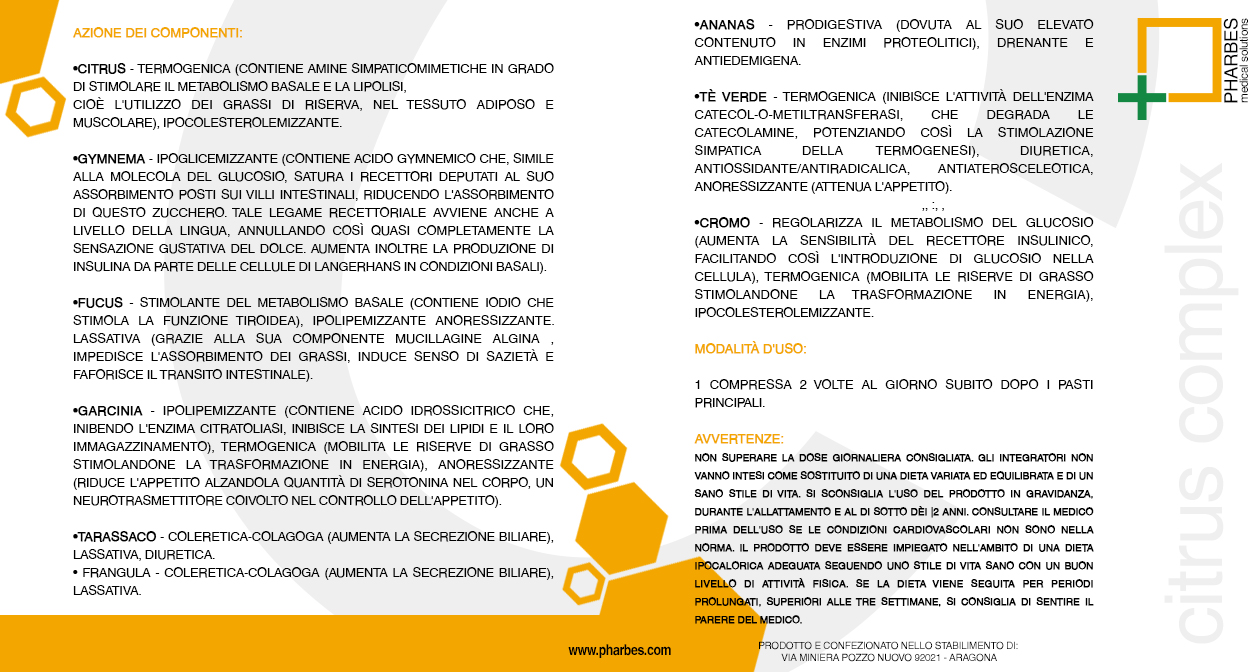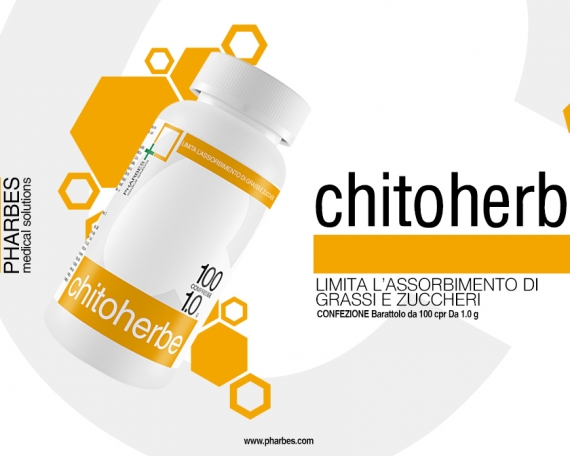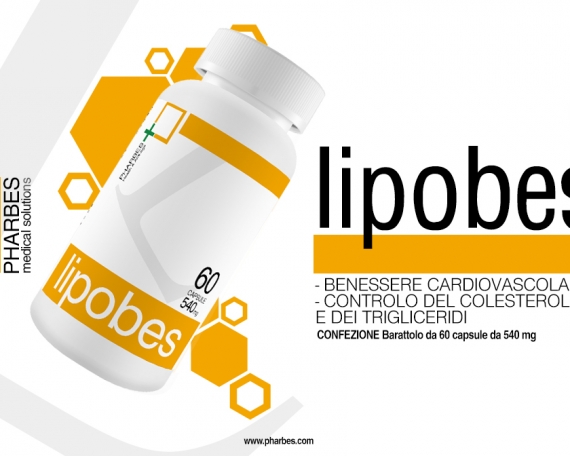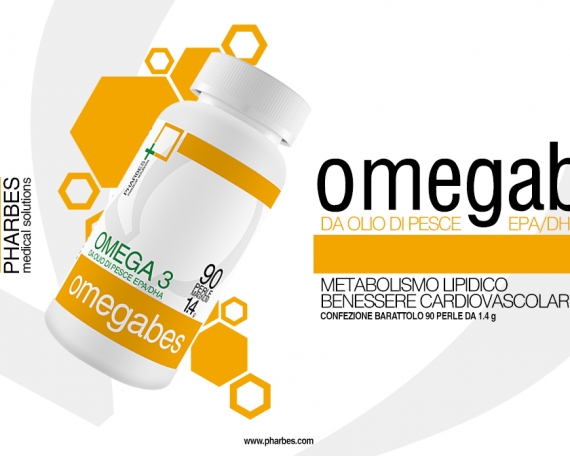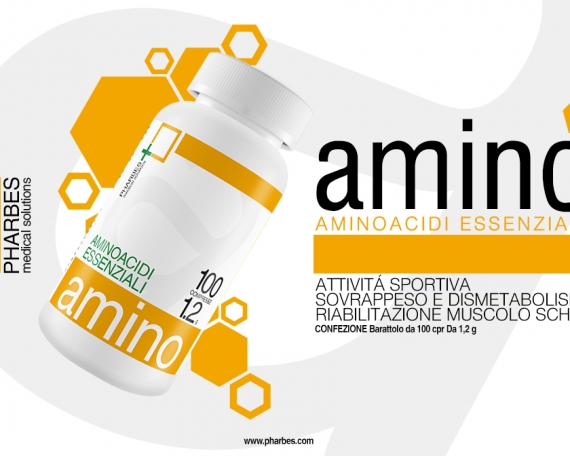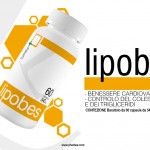
CITRUS COMPLEX
100 compresse da 1 g
–
Citrus Complex è un integratore alimentare a base di Citrus Aurantium, Tè Verde, Gymnema, Fucus, Garcinia, Tarassaco, Ananas e Cromo. Termogenico e stimolante del metabolismo. Limita assorbimento di grassi e zuccheri e stimola la lipolisi, l’utilizzo dei grassi di riserva. Favorisce il drenaggio dei liquidi corporei e il fisiologico equilibrio del peso corporeo.
APPROFONDIMENTI

BIBLIOGRAFIA CITRUS COMPLEX
-
Agarwal S.K, Singh S.S., Verma S, Lakshmi V., Sharma A. Chemistry and medicinal uses of Gymnema sylvestre (gurmar) Leaves: A Review. Indian Drugs. 37; 2000: 354–360.
-
ALLISON DB, CUTTER G, POEHLMAN ET, MOORE DR, BARNES S. Exactly which synephrine alkaloids does Citrus aurantium (bitter orange) contain? Int J Obes. 2005; 29: 443-446.
-
ARAFA HM, ALY HA, ABD-ELLAH MF, EL-REFAEY HM. Hesperidin attenuates benzo[alpha] pyrene-induced testicular toxicity in rats via regulation of oxidant/antioxidant balance. Toxicol Ind Health. 2009; 25: 417-427.
-
ARBO MD, LARENTIS ER, LINCK VM, ABOY AL, PIMENTEL AL, HENRIQUES AT, DALLEGRAVE E, GARCIA SC, LEAL MB, LIMBERGER RP. Concentrations of p-synephrine in fruits and leaves of Citrus species (Rutaceae) and the acute toxicity testing of Citrus aurantium extract and p-synephrine. Food Chem Toxicol. 2008 Aug; 46: 2770-2775.
-
Badimon L, Vilahur G, Padro T: Nutraceuticals and atherosclerosis: human trials, Cardiovasc Ther 2010, 28:202-215.
-
Baskaran K, Ahamath BK, Shanmugasundaram KR, Shanmugasundaram ER. Antidiabetic effect of a leaf extract from Gymnema sylvestre in non-insulin-dependent diabetes mellitus patients. J Ethnopharmacol 1990;30:295-305.
-
Baskaran K. Antidiabetic effect of a leaf extract from Gymnema sylvestre in non-insulin-dependent diabetes mellitus patients. J Ethnopharmacol. 30(3); 1990: 295-300.
-
Bettuzzi S, Brausi M, Rizzi F, Castagnetti G, Peracchia G, Corti A. Chemoprevention of human prostate cancer by oral administration of green tea catechins in volunteers with high-grade prostate intraepithelial neoplasia: a preliminary report from a one-year proof-of-principle study. Cancer Res. 2006 Jan 15;66(2):1234-40 .
-
Biochem Biophys Res Commun. 1995 Sep 25;214(3):833-8.
-
BLUMENTHAL M. Bitter orange peel and synephrine. Part 1 WholeFoods 2004 and Part 2. WholeFoods 2005. ®American Botanical Council.
-
BOUCHARD NC, HOWLAND MA, GRELLER HA, HOFFMAN RS, NELSON LS. Ischemic stroke associated with use of an ephedra-free dietary supplement containing synephrine. Mayo Clin Proc. 2005; 80: 541-545.
-
CALAPAI G, FIRENZUOLI F, SAITTA A. Antiobesity and cardiovascular toxic effects of Citrus aurantium extracts in the rat: a preliminary report. Fitoterapia. 1999; 70: 586-592.
-
Calle EE, Thun MJ, Petrelli JM, Rodriguez C, Heath CW: Body-mass index and mortality in a prospective cohort of U.S. adults. N Engl J Med 1999,341:1097-1105.
-
CARPENE C, GALITZKY J, FONTANA E, ATGIE C, LAFONTAN M, BERLAN M. Selective activation of beta3-adrenoceptors by octopamine:comparative studies in mammalian fat cells, Naunyn Schmiedebergs Arch Pharmacol. 1999; 359: 310-321.
-
Cederroth CR, Nef S: Soy, phytoestrogens and metabolism: A review. Mol Cell Endocrinol 2009, 304:30-42.
-
Chattopadhyay R.R. A comparative evaluation of some blood sugar lowering agents of plant origin. J Ethnopharmacol. 67; 1999: 367.
-
Cope MB, Erdman JW, Allison DB: The potential role of soyfoods in weight and adiposity reduction: an evidence-based review. Obes Rev 2008, 9:219-235.
-
D’ANDREA G, TERRAZZINO S, FORTIN D, COCCO P, BALBI T, LEON A. Elusive amines and primary headaches: historical background and prospectives. Neurol Sci. 2003; 24: S65-S67.
-
Dateo GP, Long L. Gymnemic acid, the antisaccharine principle of Gymnema sylvestre. Studies on isolation and heterogenesity of gymnemic acid A1. J. Agric. Food Chem. 21; 1973: 899–90. (41) PHARMACIA, Vol I, Issue 2 July 2011.
-
Dewell A, Hollenbeck PLW, Hollenbeck CB: Clinical review: a critical evaluation of the role of soy protein and isoflavone supplementation in the control of plasma cholesterol concentrations. J Clin Endocrinol Metab 2006, 91:772-780.
-
Diepvens K. et al. Metabolic effects of green tea and of phases of weight loss. Physiol Behav. ,7(1): 185-91, 2006.
-
Duke, James A., (ed) . Handbook of medicinal herbs (2nd ed.). CRC Press 2002. p. 855. I
-
Egras AM, Hamilton WR, Lenz TL, Monaghan MS: An evidence-based review of fat modifying supplemental weight loss products. J Obes 2011,2011.
-
Facts and Comparisons Publishing Group. The Review of Natural Products. St. Louis, MO: Facts and Comparisons, a Wolters Kluwer Co; 1996.
-
Fough-Berman A, Myers A. Citrus aurantium, an ingredient of dietary supplements marketed for weight loss: current status of clinical and basic research. Exp Biol Med. 2004; 229: 698-704.
-
Grundy SM, Cleeman JI, Bairey Merz CN, Brewer HB Jr, Clark LT, Hunninghake DB, Pasternak RC, Smith SC Jr, Stone NJ: Implications of Recent Clinical Trials for the National Cholesterol Education ProgramM Adult Treatment Panel III Guidelines. J Am Coll Cardiol 2004, 44:720-732.
-
Gupta SS, Variyar MC. Experimental studies on pituitary diabetes IV. Effect of Gymnema sylvestre and Coccinia indica against the hyperglycemia response of somatotropin and corticotrophin hormones. Indian J Med Res 1964;52:200-207.
-
Gupta SS. Inhibitory effect of Gymnema sylvestre (Gurmar) on adrenaline induced hyperglycemia in rats. Indian J Med Sci 1961;15:883-887.
-
HALLER CA, BENOWITZ NL, JACOB P 3rd. Hemodynamic effects of ephedra-free weight-loss supplements in humans. Am J Med. 2005; 118: 998-1003.
-
HEALTH CANADA Products containing bitter orange or synephrine: suspected cardiovascular adverse reactions. Canadian Adverse reaction newsletter 2004; 14: 3-4.
-
Ho HM, Chen RY, Leung LK, Chan FL, Huang Y, Chen Z-Y: Difference in flavonoid and isoflavone profile between soybean and soy leaf. Biomed Pharmacother 2002, 56:289-295.
-
HOFFMAN BB, TAYLOR P. Neurotransmission. In: Hardman JG, Limbird LE, eds. Goodman and Gilman’s The Pharmacological Basis of Therapeutics. 10th ed. New York, NY: McGraw-Hill, 2001: 115-153.
-
Kanetkar PV, Laddha KS, Kamat MY. Poster presented at the 16th ICFOST meet organized by CFTRI and DFRL. Mysore, India: 2004. Gymnemic acids: A molecular perspective of its action on carbohydrate metabolism.
-
Kapoor LD. Handbook of Ayurvedic Medicinal Plants. Boca Raton, FL:CRC Press, Inc; 1990: 200-201.
-
Khan SG, Katiyar SK, Agarwal R, Mukhtar H. Enhancement of antioxidant and phase II enzymes by oral feeding of green tea polyphenols in drinking water to SKH-1 hairless mice: possible role in cancer chemoprevention. Cancer Res. 1992 Jul 15;52(14):4050-2.
-
Khare A.K, Tondon R.N., Tewari J.P. Hypoglycemic activity of an indigenous drug Gymnema sylvestre in normal and diabetic persons. Ind. J. Physiol. Pharmacol. 27; 1983: 257–261.
-
Kono S, Ikeda M, Tokudome S, Kuratsune M. A case-control study of gastric cancer and diet in northern Kyushu, Japan. Jpn J Cancer Res. 1988 Oct;79(10):1067-74.
-
Kopelman PG: Obesity as a medical problem. Nature 2000, 404:635-643.
-
Kyremateng P.H., cited in Prendergast HDV (ed.) Plants for Food and Medicine, Royal Botanic Gardens, Kew, 1998.
-
Liao S, Hiipakka RA. Selective inhibition of steroid 5 alpha-reductase isozymes by tea epicatechin-3- gallate and epigallocatechin-3-gallate.
-
Liao S, Kao YH, Hiipakka RA., Green tea: biochemical and biological basis for health benefits, Vitamins and Hormones 2001;62.
-
Liu H.M., Kiuchi F., Tsuda Y. Isolation and structure elucidation of Gymnemic acids, antisweet principles of Gymnema sylvestre. Chem. Pharm. Bull. 40; 1992: 1366–1375.
-
Maeda M., Iwashita T., Kurihara Y. Studies on taste modifiers II: Purification and structure determination of gymnemic acids, antisweet active principle from Gymnema sylvestre leaves. Tetr. Lett. 30; 1989: 1547–1550.
-
Manni P.E., Sinsheimer J.E. Constituents from Gymnema sylvestre leaves. J. Pharm. Sci. 54; 1965: 1541–1544.
-
MCGUFFIN M. FDA spins numbers on bitter orange AERs: AHPA analysis finds only 1 actual report associated with bitter orange. AHPA Report 2004; 19: 2-4.
-
Messina M: Insights gained from 20 years of soy research. J Nutr 2010, 140:2289S-2295S.
-
Nakamura Y., Tsumura Y., Tonogai Y., Shibata T. Fecal steroid excretion is increased in rats by oral administration of gymnemic acids contained in Gymnema sylvestre leaves. J. Nutr. 129; 1999:1214–1222.
-
NASIR JM, DURNING SJ, FERGUSON M, BAROLD HS, HAIGNEY MC. Exercise-induced syncope associated with QT prolongation and ephedra free Xenadrine. Mayo Clinic Proc. 2004; 79: 1059–62.
-
NTP. Bitter orange (Citrus aurantium var. amara). Extracts and constituents (±)-p-synephrine [CAS No.94-07-5] and (±)-p-octopamine [CAS No.104-14-3]. Review of toxicological literature. National Toxicology Program. Jun 2004.
-
NYKAMP DL, FACKIH MN, COMPTON AL. Possible association of acute lateral-wall myocardial infarction and bitter orange supplement. Ann Pharmacother. 2004; 38: 812-816.
-
Oguni I, Nasu K, Kanaya S, Ota Y, Yamamoto S, Nomura T. Epidemiological and experimental studies on the antitumor activity by green tea extracts. Jpn J Nutr. 1989; 47,93-102 .
-
Okabayashi Y, Tani S, Fujisawa T, et al. Effect of Gymnema sylvestre, R.Br. on glucose homeostasis in rats. Diabetes Res Clin Pract 1990;9:143-148.
-
Okabayashi Y., Effect of Gymnema sylvestre, R.Br. on glucose homeostasis in rats. Diabetes. Res Clin Pract. 9(2);1990: 143-8.
-
Onakpoya I, Hung SK, Perry R, Wider B, Ernst E: The Use of Garcinia Extract (Hydroxycitric Acid) as a Weight loss Supplement: A Systematic Review and Meta-Analysis of Randomised Clinical Trials. J Obes 2011, 2011:509038.
-
ORDAN S., MURTY M., PILON K. Products containing bitter orange or synephrine: suspected cardiovascular adverse reactions. CMAJ. 2004 Oct 12; 171: 993-4.
-
PELLATI F, BEVENUTI S, MELEAGRI M, FIRENZUOLI F. Determination of adrenergic agonists from extracts and herbal products of Citrus aurantium L. var. amara by LC. J Pharmacol Anal. 2002; 29: 1113-1119.
-
PENZAK SR, JANN MW, COLD JA, HON YY, DESAI HD, GURLEY BJ. Seville (sour) orange juice: synephrine content and cardiovascular effects in normotensive adults. J Clin Pharmacol., 2001; 41: 1059-1063.
-
Persaud SJ, Al-Majed H., Raman A, Jones PM. Gymnema sylvestre stimulates insulin release in vitro by increased membrane permeability. J. Endocrinol.; 163; 1999: 207–212.
-
Pittler MH, Ernst E: Dietary supplements for body-weight reduction: a systematic review, Am J Clin Nutr 2004, 79:529-536.
-
Poobalan AS, Aucott LS, Smith WCS, Avenell A, Jung R, Broom J: Long-term weight loss effects on all cause mortality in overweight/obese populations. Obes Rev 2007, 8:503-513.
-
Prakash AO, Mather S, Mather R. Effect of feeding Gymnema sylvestre leaves on blood glucose in beryllium
-
Rehm, Sigmund (ed) (1994). Multilingual dictionary of agronomic plants. Springer. p. 91.
-
Shanmugasundaram E.R., Possible regeneration of the islets of Langerhans in streptozotocin-diabetic rats given Gymnema sylvestre leaf extracts. Ethnopharmacol. ,30(3); 1990: 265-79
-
Shanmugasundaram E.R., Use of Gymnema sylvestre leaf extract in the control of blood glucose in insulin-dependent diabetes mellitus. J Ethnopharmacol. 30(3); 1990: 281-94.
-
Shanmugasundaram ER, Gopinath KL. Shanmugasundaram KR, Rojendran VM. Possible regeneration of the islets of Langerhans in streptozotocin-diabetic rats given Gymnema sylvestre leaf extracts. J Ethnopharmacol 1990;30:265-279.
-
Shanmugasundaram ER, Rajeswari G, Baskaran K, et al. Use of Gymnema sylvestre leaf in the control of blood glucose in insulin-dependent diabetes mellitus. J Ethnopharmacol 1990;30:281-294.
-
Shanmugasundaram K.R ., Enzyme changes and glucose utilisation in diabetic rabbits: the effect of Gymnema sylvestre, R.Br. J Ethnopharmacol. 7(2); 1983: 205-34.
-
Shanmugasundaram KR, Panneerselvam C, Samudram P, Shanmugasundaram ER. Enzyme changes and glucose utilisation in diabetic rabbits: the effect of Gymnema sylvestre, R.Br. J Ethnopharmacol 1983;7:205-234.
-
Shimizu K. Inhibitory effects of glucose utilization by gymnema acids in the guinea-pig ileal longitudinal muscle. J Smooth Muscle Res. 32; 1996: 219.
-
Shimizu K., Suppression of glucose absorption by some fractions extracted from Gymnema sylvestre leaves. J Vet Med Sci. 59; 1997: 245.
-
Sinsheimer J.E., Subbarao G. Constituents from Gymnema sylvestre leaves VIII: Isolation, chemistry and derivatives of gymnemagenin and gymnestrogenin. J. Pharm. Sci. 60; 1971: 190–193.
-
Sinsheimer JE, Manni PE. Constituents from Gymnema sylvestre leaves. J. Pharm. Sci.; 54; 1965: 1541–1544.
-
Srivasta Y, Bhatt HV, Prem AS, et al. Hypoglycemic and life-prolonging properties of Gymnema sylvestre leaf extract in diabetic rats. Isr J Med Sci 1985;21:540-542.
-
Srivastava Y., Nigam S., Bhatt H. Hypoglycemic and life- prolonging properties of Gymnema sylvestre leaf extract. Int J Crude Drug Res. 24; 198: 6171.
-
Stensvold I, Tverdal A, Solvoll K, Foss OP. Tea consumption. relationship to cholesterol, blood pressure, and coronary and total mortality. Prev Med. 1992 Jul;21(4):546-53.
-
THE MERCK INDEX An Enciclopedia of chemicals, drugs, and biologicals. 10th Ed. Merck & Co., Inc. 1983: 1295.
-
THE MERCK INDEX An Enciclopedia of chemicals, drugs, and biologicals. 10th Ed. Merck & Co., Inc. 1983: 971.
-
Venkatakrishna-Bhatt H, Srivastava Y, Jhala CI, et al. Effect of Gymnema sylvestre, R.Br. leaves on blood sugar and longevity of alloxan diabetic rats. Indian J Pharmacol 1981; 13:99.
-
Wang L.F. Can J Physiol Pharmacol . 76; 1998: 1017.
-
Wiersema, John Harry; León, Blanca. World Economic Plants: A Standard Reference. CRC Press 1999. p. 661.
-
Yang CS, Wang ZY. Tea and cancer. J Natl Cancer Inst. 1993 Jul 7;85(13):1038-49.
-
Yoshikawa M., Chem Pharm Bull; 45; 1997: 2034.
-
Yoshikawa M., et al, Medicinal foodstuffs. IX. The inhibitors of glucose absorption from the leaves of Gymnema sylvestre R. BR. (Asclepiadaceae): structures of gymnemosides a and b. Chem Pharm Bull (Tokyo). 1997 Oct; 45(10):1671-6.
-
Yuk HJ, Lee JH, Curtis-Long MJ, Lee JW, Kim YS, Ryu HW, Park CG, Jeong TS, Park KH: The most abundant polyphenol of soy leaves, coumestrol, displays potent [alpha] glucosidase inhibitory activity. Food Chem 2011, 126:1057-1063.
-
Zhu DY, Li XY, Jang FX, Yang JD, Zhaou J, Kubo M, Nishimura H, Sasaki H, Chen ZXCM, Ando M, Nagasawa M, Mitsuhashi H. Studies on anti-diabetic principles from By-Yu-Cha. Planta Med., 1990;56,684 .



